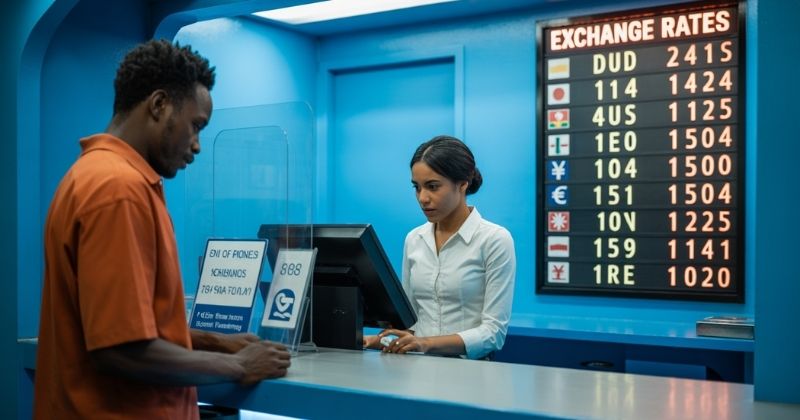
While there is broad consensus among economists that the South African Reserve Bank (SARB) is likely to keep interest rates on hold or possibly implement a further reduction during its July meeting, there remains a degree of caution that the Bank could shift its approach in the months to come. This hesitation stems from growing instability in global financial markets, which may ultimately pressure the SARB to reverse course in order to safeguard the economy.
Key Takeaways
- Interest Rate Outlook Remains Uncertain: While economists anticipate a rate hold or cut in July, the South African Reserve Bank (SARB) may be forced to pivot if inflation trends upward or global financial instability worsens, especially given its plans to lower the inflation target to around 3 percent.
- External and Domestic Pressures Are Intensifying: Ongoing global trade tensions, new US tariffs on South African exports, and the potential loss of African Growth and Opportunity Act (AGOA) benefits are straining export sectors and limiting the SARB’s policy flexibility, even as domestic inflation remains subdued.
- Aggressive Tightening May Harm Growth: Experts caution that further interest rate hikes could deepen economic stagnation, with high consumer debt, slowing demand, and unresolved trade challenges making monetary tightening a risky strategy. Fiscal discipline is seen as a more effective tool for stabilisation.
About Arcadia Finance
Get the loan you need without the hassle. With Arcadia Finance, you pay no application fees and can choose from 19 trusted lenders regulated by South Africa’s National Credit Regulator. Fast, secure, and tailored to your needs.
Inflation Target May Fuel Policy Reversal
Adding to the complexity is the Reserve Bank’s goal of achieving a lower inflation target before the year ends. If inflation trends fail to align with this target, it could compel the Bank to reconsider its current trajectory. In such a scenario, interest rate hikes could once again become a viable option, despite earlier expectations for a more accommodative stance.
A significant deviation from inflation projections could spark concern among bondholders and rating agencies, potentially impacting the cost of borrowing for both the state and the private sector.
Frederick Mitchell, the chief economist at Aluma Capital, has cautioned that a renewed cycle of interest rate increases might deepen the country’s existing economic malaise. He argued that such a move could weaken long-term economic growth prospects at a time when the economy is already grappling with sluggish performance and structural constraints. Household debt levels remain elevated, and disposable income has stagnated, leaving consumers highly sensitive to any increase in loan repayments, which could further erode spending power and economic activity.

SARB Navigating Delicate Terrain
The Reserve Bank finds itself in a particularly difficult situation. Policymakers are now operating in an exceptionally sensitive economic environment, where decisions must be finely balanced to avoid exacerbating domestic vulnerabilities. This balancing act is made more difficult by the interplay of internal and external pressures, many of which remain unpredictable.
Any misstep in timing or magnitude of monetary policy adjustments could damage credibility and create confusion in the financial markets, leading to currency instability or capital flight.
Headline inflation in South Africa has recently surprised to the downside, deviating from the SARB’s inflation target band of 3 percent to 6 percent. This unexpected development provided the Monetary Policy Committee (MPC) with the space to implement a cumulative reduction of 100 basis points in the repo rate since September 2024. These cuts were carried out despite turbulent conditions in the broader global economy. This marked a rare alignment of economic data and policy space, offering temporary breathing room for indebted households and embattled businesses.
Global Tensions Fuel Market Instability
South Africa’s interest rate decisions are increasingly being shaped by mounting global uncertainty. Tensions have been fuelled by erratic trade and tariff policies introduced by the United States, alongside escalating geopolitical conflicts that have triggered volatile market reactions. In this climate, monetary decisions must take into account not only local conditions but also the risks presented by an unstable international environment.
From Eastern Europe to East Asia, conflict hotspots are influencing oil prices, shipping routes, and global risk appetite, all of which indirectly shape the SARB’s risk assessment.
Trade with the United States Faces Mounting Pressure
South Africa’s recent trade surplus with the United States, amounting to R37 billion, was largely supported by the African Growth and Opportunity Act (AGOA). However, the nation’s continued access to AGOA benefits is now in doubt. A new 30 percent tariff on South African exports to the United States is expected to take effect on 1 August, which could erase much of the trade advantage previously enjoyed. Trade officials have expressed concern that losing AGOA benefits would set back export diversification efforts and undermine regional trade goals promoted under the African Continental Free Trade Area (AfCFTA).
Export Sectors at Risk of Collapse
Mitchell expressed concern that the incoming tariff increases may drive already struggling sectors into a deeper crisis. According to recent trade reports, the automotive industry has already experienced a steep decline of 82 percent in exports to the United States during the first half of 2025 due to pre-existing tariffs. Any additional increases, particularly an anticipated 10 percent tariff targeting BRICS countries seen as opposing American policy interests, may trigger factory shutdowns and widespread job losses across the country. Export councils are warning of ripple effects on component suppliers, logistics providers, and municipal revenues tied to the manufacturing sector.

Monetary Policy Limited by External Constraints
Faced with rising global instability and inflationary pressure, conventional thinking might suggest that increasing interest rates could help suppress inflation. However, Mitchell highlighted that the present context does not align with traditional economic responses. With domestic inflation relatively subdued and economic growth under threat, a decision to tighten policy could prove harmful rather than helpful. In fact, increasing rates under these conditions may slow credit growth, raise the cost of capital, and discourage private sector investment, all at a time when the economy needs stimulus.
Underlying Trade Challenges Worsen the Outlook
This risk becomes even more pronounced when viewed in conjunction with unresolved trade disputes. Although the SARB Governor has indicated that inflation is likely to remain within the target band, the uncertainties of the global trade landscape continue to cast a long shadow. Further monetary tightening in such a vulnerable environment could deal a blow to growth, especially as signs of economic slowdown in China and intensified trade tensions continue to build. Beijing’s softening demand for raw materials has already contributed to weaker commodity prices, which directly impact South Africa’s fiscal revenues and export earnings.
South Africa’s Export Reliance Increases Risk Exposure
Mitchell further noted that the domestic economy is deeply dependent on exports and remains highly sensitive to external shocks. In such a context, adopting a restrictive monetary policy stance could worsen recessionary forces without equipping the economy to withstand trade-related turbulence. He suggested that efforts to stabilise inflation must be balanced against the risk of overreacting to international developments. Maintaining currency stability and investor confidence under these conditions is a delicate exercise that depends on clear communication and coordinated policy responses.
While some room exists for modest rate adjustments, Mitchell argued that the better path forward would involve disciplined fiscal management. Rather than resorting to frequent interest rate hikes in response to short-term inflation shifts, policymakers should prioritise long-term stability through responsible budgeting and sound economic planning. He emphasised that South Africa’s economic resilience would be better safeguarded by maintaining stable trade relationships and focusing on prudent government spending. Addressing public sector inefficiencies and curbing wasteful expenditure could create space for targeted social and infrastructure investments without fuelling inflation.

Domestic Inflation Targets Add to Pressure
Challenges to interest rate stability are not limited to international issues. On the domestic front, the SARB must also grapple with the likelihood of a new, lower inflation target being introduced. Analysts expect that this revised target will be confirmed before the end of the year, possibly settling near the 3 percent mark. If so, interest rates may remain elevated or even be increased in the short term to guide the economy towards this tighter inflation threshold.
This would mark a significant shift in South Africa’s monetary policy framework, potentially mirroring the inflation-targeting models adopted by more developed economies.
Households May Face More Short-Term Financial Strain
Historically, it takes roughly two years to bring inflation in line with a new target. During this adjustment period, the SARB has indicated that households could experience financial strain as borrowing costs remain high or increase further. This suggests that relief in the form of interest rate cuts may not materialise in the near term, particularly if inflation trends upwards. Credit-active consumers already struggling with loan defaults may find themselves locked out of further borrowing, exacerbating inequality and dampening consumption.
Long-Term Benefits of Lower Inflation Target
Nonetheless, the SARB argues that this approach could prove beneficial in the long term. By aiming for a lower inflation rate, the Bank hopes to prevent the rapid price increases that have burdened consumers under the current midpoint target of 4.5 percent. This shift is expected to provide greater price stability in future, though the short-term implications for consumers could be challenging. If successful, this strategy could restore purchasing power and enhance macroeconomic predictability, supporting investment confidence over time.
In the immediate future, attention turns to the SARB’s Monetary Policy Committee, which is scheduled to meet at the end of the month. Economists remain divided on the likely outcome of this meeting. Some forecast a further 25 basis point rate cut, marking what could be the final reduction in the current cycle. Others believe the committee may opt to keep rates unchanged as it waits for more clarity on how global and domestic shocks unfold. The decision will be watched closely by investors, credit rating agencies, and business chambers, all of whom are hoping for clearer forward guidance from the central bank.
Conclusion
South Africa stands at a delicate economic crossroads, with the SARB navigating conflicting pressures from weak domestic growth and intensifying global risks. While inflation remains within target for now, looming trade disruptions and tariff escalations could undermine economic stability. The MPC’s upcoming decision is crucial and must weigh short-term vulnerabilities against long-term policy goals, particularly as the country edges towards a tighter inflation framework. Policymakers are urged to tread carefully, prioritising fiscal prudence and clear communication to maintain confidence in a volatile environment.
Fast, uncomplicated, and trustworthy loan comparisons
At Arcadia Finance, you can compare loan offers from multiple lenders with no obligation and free of charge. Get a clear overview of your options and choose the best deal for you.
Fill out our form today to easily compare interest rates from 19 banks and find the right loan for you.



